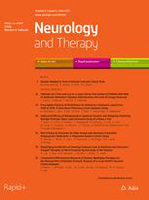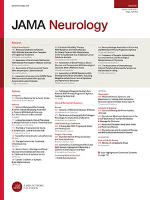
EPILEPSIA
Scope & Guideline
Unveiling the complexities of epilepsy and neurology.
Introduction
Aims and Scopes
- Clinical Research and Trials:
The journal publishes studies on the efficacy and safety of new and existing antiseizure medications, surgical interventions, and other treatment modalities, emphasizing evidence from clinical trials. - Neurophysiology and Biomarkers:
Research on electroencephalographic (EEG) patterns, biomarkers, and neuroimaging techniques to enhance the understanding of seizure mechanisms and predict surgical outcomes is a significant focus. - Genetics and Epigenetics:
There is a strong emphasis on the genetic underpinnings of epilepsy, including studies on genetic variants, their phenotypic expressions, and implications for precision medicine. - Pediatric and Adolescent Epilepsy:
The journal addresses the unique challenges and treatment options for epilepsy in children and adolescents, with a focus on developmental and epileptic encephalopathies. - Psychosocial Aspects and Quality of Life:
Research exploring the impact of epilepsy on mental health, quality of life, and the social stigma associated with the condition is regularly featured. - Innovative Technologies and Approaches:
The journal includes studies on the use of wearable devices, artificial intelligence, and telemedicine in the management and monitoring of epilepsy.
Trending and Emerging
- Precision Medicine and Genetic Testing:
There is a growing emphasis on tailored treatment approaches based on genetic testing, with studies investigating the implications of specific genetic variants on treatment efficacy and outcomes. - Wearable Technology and Remote Monitoring:
Research on the use of wearable devices for seizure detection and monitoring has surged, highlighting the potential for technology to enhance patient care and management. - Neuroinflammation and Immune Mechanisms:
Emerging studies are focusing on the role of neuroinflammation and immune responses in the pathogenesis of epilepsy, paving the way for novel therapeutic strategies. - Psychogenic Non-Epileptic Seizures (PNES):
There is an increasing interest in understanding and treating PNES, with a focus on the psychosocial dimensions and interventions that can improve patient outcomes. - Long-Term Outcomes and Quality of Life Studies:
Research examining the long-term effects of epilepsy treatments on quality of life and psychosocial well-being is gaining prominence, addressing the holistic needs of patients.
Declining or Waning
- Generalized Epilepsy Research:
There has been a noticeable decrease in studies focusing exclusively on generalized epilepsy syndromes, suggesting a shift towards more specific or complex forms of epilepsy. - Traditional Pharmacological Approaches:
Research centered around older antiseizure medications is declining, possibly due to the increasing interest in novel therapies and personalized medicine. - Surgical Techniques in Established Epilepsy:
Publications detailing traditional surgical techniques for epilepsy management are less frequent, as the field moves towards innovative and less invasive methods. - Epidemiological Studies:
Studies focused solely on the epidemiology of epilepsy, without a direct link to treatment outcomes or interventions, appear to be less prominent in recent issues. - Longitudinal Studies without Interventions:
There is a decrease in longitudinal studies that do not assess interventions or treatment changes, potentially due to a growing emphasis on actionable research.
Similar Journals

Epilepsia Open
Bridging gaps in epilepsy knowledge for global impact.Epilepsia Open is a premier open access journal dedicated to advancing the field of neurology, particularly in the area of epilepsy research and clinical practice. Published by WILEY since 2016, this journal aims to provide a platform for high-quality, peer-reviewed research that fosters collaboration among researchers, clinicians, and educators within the global neurological community. With an impactful presence in the field, it holds a prestigious Q2 ranking in both Neurology and Clinical Neurology categories as of 2023 and has been recognized for its contributions to the understanding of epilepsy through its diverse range of articles, reviews, and clinical studies. Researchers and practitioners can benefit from the journal's open access model, which ensures that valuable findings are readily available to the public, promoting further developments in treatment and care. The journal's significant visibility is reflected in its Scopus rankings, where it ranks in the top half of peer-reviewed journals in both Neurology and Neuroscience categories. For those committed to improving the lives of those affected by epilepsy, Epilepsia Open represents a crucial resource for cutting-edge knowledge and innovative practices.

Neurology and Therapy
Exploring Innovations in Neurology and Therapeutic SolutionsNeurology and Therapy, published by SPRINGER LONDON LTD, stands as a pivotal platform for researchers and practitioners in the field of neurology and its therapeutic applications. This Open Access journal, active since 2012, facilitates the dissemination of innovative studies and cutting-edge findings aimed at improving neurological health. With an impressive ranking in the 2023 Scopus Rankings, where it holds a Q2 category in Neurology and a Q1 category in Clinical Neurology, it underscores its prominence in advancing neurological research. The journal's intriguing scope encompasses a wide-ranging exploration of neurological disorders, treatment methodologies, and healthcare strategies, making it a valuable resource for those vested in enhancing patient outcomes. With an appealing average impact factor, readers are encouraged to dive into the latest advancements and engage with the scholarly discussions that are shaping the future of neurology.

Zeitschrift fur Epileptologie
Pioneering insights in neurology and pediatric health.Zeitschrift fur Epileptologie is a vital resource in the field of neurology and pediatric healthcare, published by Springer Heidelberg. With its ISSN 1617-6782 and E-ISSN 1610-0646, the journal focuses on the latest research and clinical practices pertaining to epilepsy, catering to an audience that includes researchers, clinicians, and students. Although it currently holds a Q4 ranking in both Neurology (clinical) and Pediatrics categories, the journal's commitment to disseminating key findings and enhancing understanding in these fields positions it as an important contributor to ongoing discussions around epilepsy management and child health. The journal has published continuously from 2005 to 2022, offering both traditional and open-access viewing options that increase its accessibility to a global audience. By maintaining an emphasis on high-quality research, Zeitschrift fur Epileptologie strives to improve patient care and embrace innovations in treatment methodologies.

REVISTA DE NEUROLOGIA
Connecting Research and Clinical Practice in NeurologyREVISTA DE NEUROLOGIA is a distinguished academic journal focusing on the broad fields of neurology and medicine, published in Spain since its inception in 1959. The journal plays a vital role in disseminating significant research findings, clinical studies, and advancements in neurological science, catering to an audience of researchers, clinicians, and students alike. With an ISSN of 0210-0010 and an E-ISSN of 1576-6578, this quarterly publication has maintained its commitment to enhancing the understanding of neurological disorders and therapies through rigorous peer-reviewed articles. While currently not classified as open access, it is indexed in Scopus, holding a rank of #253 out of 400 in the category of Medicine (Neurology), reflecting its relevance in the field with a 36th percentile. The journal is positioned within the Q3 quartile for both Medicine (miscellaneous) and Clinical Neurology categories as of 2023. Based in Barcelona, Spain, it is a vital resource for anyone devoted to the advancement of knowledge and practice in neurology.

EPILEPSY RESEARCH
Exploring breakthroughs in epilepsy research.EPILEPSY RESEARCH is a distinguished journal published by Elsevier, focusing on the dynamic field of neurology with a specific emphasis on epilepsy and related neurological disorders. Since its inception in 1987, the journal has become a vital platform for disseminating cutting-edge research, contributing significantly to the understanding of epileptic conditions and their clinical implications. With an impactful presence in the academic community, EPILEPSY RESEARCH currently holds a 2023 Q2 ranking in both the Neurology and Clinical Neurology categories, reflecting its commitment to high-quality, peer-reviewed content. The journal is indexed in SCOPUS, Ranking #173/400 in Clinical Neurology and #91/192 in Neuroscience, ensuring widespread visibility and academic engagement. Although not an open access publication, it provides critical insights, findings, and reviews that are essential for researchers, clinicians, and students alike, fostering advancements in epilepsy research and treatment. For any inquiries, the journal is based at Radarweg 29, 1043 NX Amsterdam, Netherlands.

Journal of Clinical Neurology
Fostering Collaboration in Clinical NeurologyThe Journal of Clinical Neurology, published by the Korean Neurological Association, is a prominent open-access journal that has been disseminating crucial findings in the field of neurology since its inception in 2008. With an ISSN of 1738-6586 and an E-ISSN of 2005-5013, this journal provides a vital platform for researchers and clinicians to share innovative research, reviews, and case studies that advance understanding and treatment of neurological disorders. The journal has established its reputation, achieving a Q3 ranking in Neurology and a Q2 ranking in Clinical Neurology in 2023, placing it among the noteworthy sources in the medical community. With its open-access format since 2011, it facilitates broad dissemination of knowledge to both the scientific community and the public, supporting the journal's mission to enhance clinical practice and promote neurological health in South Korea and beyond. As of October 2023, it holds influential Scopus ranks, reflecting its impact and relevance in the ever-evolving landscape of neuroscience. Researchers, professionals, and students alike are encouraged to contribute to and engage with the ongoing discourse by submitting their work and accessing a wealth of resources through this esteemed publication.

NEUROLOGICAL RESEARCH
Connecting Researchers to the Heart of NeurologyNEUROLOGICAL RESEARCH, published by TAYLOR & FRANCIS LTD, is a distinguished journal focusing on the diverse and evolving field of neurology. Established in 1979, this journal has been a prominent platform for disseminating groundbreaking research and clinical advances up to 2024. With an ISSN of 0161-6412 and an E-ISSN of 1743-1328, it offers valuable insights for researchers, professionals, and students interested in the intricate workings of the nervous system. The journal holds a respectable Q2 ranking in the field of Medicine (miscellaneous) and Q3 in the categories of Neurology and Clinical Neurology, reflecting its commitment to high-quality research. Although NEUROLOGICAL RESEARCH does not currently offer an open access option, its contributions to the literature are vital for fostering advancements in neurological understanding and treatment. With an engaged readership and a mission to advance scientific knowledge, NEUROLOGICAL RESEARCH serves as a crucial resource for anyone dedicated to neurological health and innovation.

Acta Epileptologica
Elevating knowledge in clinical neurology.Acta Epileptologica is a prominent open-access journal published by SPRINGERNATURE, dedicated to advancing research in the fields of neurology and clinical neurology. With its ISSN 2096-9384 and E-ISSN 2524-4434, this journal has established itself as a key resource for researchers and practitioners worldwide, particularly since its transition to open access in 2019. Based in the United Kingdom, Acta Epileptologica aims to disseminate high-quality research and foster scholarly collaboration, as evidenced by its consistent Q3 ranking in both neurology and clinical neurology categories as of 2023. Although currently positioned in the lower percentiles on Scopus, the journal plays a critical role in exploring emerging trends and novel therapeutic approaches in epilepsy research, making it an essential platform for academics, healthcare professionals, and students deeply invested in the evolving landscape of neurological disorders.

Journal of Pediatric Epilepsy
Exploring new frontiers in the treatment of pediatric seizure disorders.The Journal of Pediatric Epilepsy, published by GEORG THIEME VERLAG KG, is a dedicated platform for advancing the understanding and treatment of pediatric epilepsy. With ISSN 2146-457X and E-ISSN 2146-4588, this journal provides vital insights and research findings relevant to clinicians, researchers, and students in the fields of neurology, pediatrics, and psychiatry. Although its coverage in Scopus was discontinued from 2012 to 2015, the journal continues to contribute to the body of knowledge within this critical area by focusing on novel therapeutic strategies, clinical studies, and case reports that address the unique challenges faced by children with epilepsy. The journal is committed to fostering collaboration and innovation in the treatment of pediatric seizure disorders, making it an essential resource for anyone dedicated to improving outcomes in this vulnerable population.

JAMA Neurology
Shaping the Future of Neurology One Article at a TimeJAMA Neurology is a leading peer-reviewed journal published by the American Medical Association, focused on advancing the understanding and treatment of neurological disorders. With an impressive impact factor and ranked in the 99th percentile among clinical neurology journals, this publication is recognized as Q1 in its category for 2023, highlighting its significance in the field. Since its inception, the journal has provided a platform for high-quality research, clinical trials, and reviews that inform both clinicians and researchers. Operating from its headquarters in Chicago, Illinois, JAMA Neurology offers rich insights into the latest advancements in neurology, featuring articles that span a wide range of topics including neurodegenerative diseases, stroke, epilepsy, and neurocritical care. Researchers and professionals are encouraged to access the journal’s content freely, as it employs open access options to promote the dissemination of critical knowledge. As a critical resource in the field of neurology, JAMA Neurology is essential for anyone involved in this dynamic and rapidly evolving specialty.